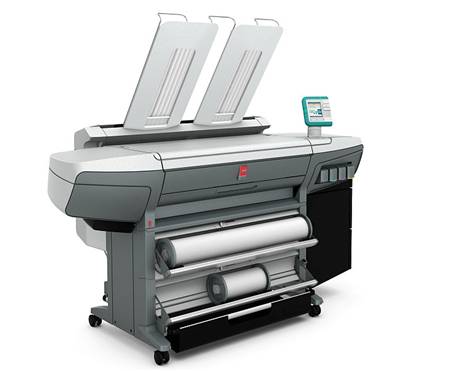


DIGITAL PLOTTER DRAWING UPDATE
Flatbeds also made it easy to update drawings by going over them in multiple passes, where I imagine it would be a nightmare to align if it were in a drum plotter. This was a preferred type of plotter for cases where you needed to view the whole piece as it is being plotted in real time, or if you needed to plot on various surfaces or paper that could not be loaded into a drum 1. As the name suggests, the surface to be drawn on would be laid out flat, rather than rolled up on a drum. I should note that CalComp wasn’t the only one to produce plotters then, other notable brands I came across when browsing were Benson, Hewlett-Packard (HP), and GRAPHOMAT.ĬalComp 745 Flatbed Plotter from a catalog 4Īnother variety were the flatbed plotters. 3 I’ll be using examples of their devices to illustrate the varieties of plotters available. But it seems like the company has been revived as a merger of two companies since and continues to produce large format printers and cutters. CalComp ran from 1958 to 1999, when it closed due to lack of capital.
DIGITAL PLOTTER DRAWING MANUALS
While researching this, I came accross one of their reference manuals which provided a nice overview of their available products in the 70s 1.

One of the premier manufacturers of plotters back in the day was CalComp, in Anaheim California. Drum printers such as the CalComp 565 allowed continuous rolls of paper to be fed into it, allowing up to 120 feet of continous surface, which made it ideal for large or continuous diagrams. The pen move across the surface of the paper and move on the X-axis. To use it, you would load a roll of paper on which the machine could advance or reverse, moving on the Y-axis. One of the earliest commercial plotters, the CalComp 565 was a drum plotter. It holds a pen and can move accross a paper surface on a XY-axis. I like to think of a mechanical plotter as a drawing robot. The first type of plotter was the mechanical plottter. While their capabilities have not varied much since their start, the ways in which they are used have shifted, most recently experiencing a re-emergence as within the generative art community. When I first saw them, I had assumed they were a cool new bit of tech, but plotters have had a long history going back at to least 60 years ago. As of early 2019, most of the plotters featured are modern, specifically the Axidraw by Evil Mad Scientist Labs. If you look up media posts on Twitter for #plottertwitter, you will be rewarded with many delightfully hyponotic videos of plotters in action. My personal fascination with plotters comes from watching it in action. This part can be read on it’s own, but for a quick introduction to the state of technology in the era, check out Part 1: Computer Graphics. In this installment we’ll talk about plotters.
DIGITAL PLOTTER DRAWING SERIES
I’m writing a series of blog posts on computer art history from the 1960s onwards. History of Computer Art - Part 2: Plotters


 0 kommentar(er)
0 kommentar(er)
